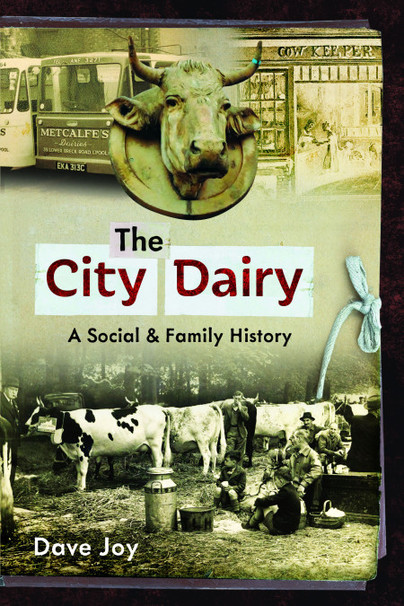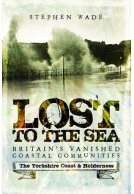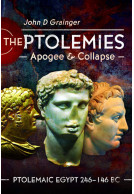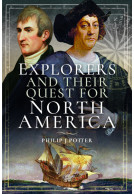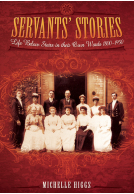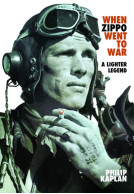The City Dairy (Paperback)
A Social and Family History
Imprint: Pen & Sword History
Pages: 200
Illustrations: 80 mono illustrations
ISBN: 9781399069014
Published: 2nd August 2023
(click here for international delivery rates)
Order within the next 8 hours, 39 minutes to get your order processed the next working day!
Need a currency converter? Check XE.com for live rates
| Other formats available | Price |
|---|---|
| The City Dairy ePub (16.8 MB) Add to Basket | £6.99 |
The early nineteenth century witnessed the mass movement of people from Britain’s countryside into its burgeoning towns and cities; people came to the city in search of work. This prompted many dairy farmers to follow suit and move themselves, their family and their cows into the country’s growing metropolises, where they opened the first generation of city dairies.
In the 1830s, transportation in Britain was revolutionised by the coming of the railways, enabling foodstuffs, including milk, to be transported in bulk from countryside to city. Large dairy companies took advantage of this opportunity, opening a new generation of retail dairies. The demand for milk was so great that some cities boasted a dairy at the end of every street.
For the next hundred years the cowkeepers fought a rear-guard action against the mighty corporate dairies and their attempts to monopolise the liquid milk market. The cowkeepers continued to produce their own milk, selling it — ‘fresh from the cow’ — over the dairy counter and out on the milk round. These dairies were kept in the family, handed down through successive generations.
Despite surviving two World Wars, the rapid technological, social and economic changes that followed, brought about the demise of the traditional cowkeeper. But the city dairy continued as a family business, working as part of a national distribution network, overseen by the Milk Marketing Board. Out on the round, the family dairyman was almost indistinguishable from the corporate milkman.
The sixties and seventies saw the arrival of the Supermarket, a game-changer in retailing. To survive, the city dairy had to change once more. It expanded its offer and seamlessly joined the ranks of those other most British of institutions: the Corner Shop and the Convenience Store.
"The City Dairy is a timely reminder..."
Who Do You Think You Are? - Issue 213, January 2024
"There is a very good section on researching ancestors in the business, many fascinating old photographs of people and places of work, and some interesting diagrams."
Journal of the Bristol & Avon Family History Society - December 2023 - Number 194
"I would recommend this book to anyone who would like to do research on their ancestors who were involved in this section of the farming industry."
The Essex Family Historian - The Essex Society for Family History Magazine, Edition No 180, December 2023
Rating: 5 out of 5 stars
NetGalley, Meg Gajda
Dave Joy's biographical book can't be missed. It's full of history , food production and distribution. All that illustrated by images and diagrams. Highly recommended.
Rating: 5 out of 5 stars
NetGalley, Hannah Hill
I will admit a personal interest in this book, I too have Lancashire Cowkeepers amongst my ancestors, but my family and I had always just assumed they were Ag Labs who looked after cows. This fascinating book has shown me that the story of Cowkeepers is so much more interesting, and I am now proud of my cowkeeper ancestors. The book is split into parts. Part one is an interesting history of Cowkeepers with an in-depth and well written description of what it was to be a cow keeper. Part two is an excellent research guide. It uses cow keepers as examples, but you could replace cowkeeper with any profession and use the guide to help you research ancestors. The guide is helpful, informative, and very easy to follow - especially for a beginner. Part three is case studies, and again, if you want to research other ancestors besides your cow keeping ancestors, these case studies are interesting and helpful. If you have cowkeepers as ancestors - and there are a lot of us I realise from reading this book, this is a MUST BUY. But the book would be useful for researching all your ancestors what ever profession they followed.
Rating: 5 out of 5 stars
NetGalley, Vida Clark
A beautiful blend of autobiography, history, food culture, and capturing the change technological advances have brought to human civilization.'A City Dairy' brings an awareness to how the changes shifting from rural to urban have affected the way humans consume, process, and provide access to mainstay food products now readily available for many in grocery stores.
For the average individual in the modern world, going to the grocery store yields multiple choices in dairy products, especially milk. Ranging from milk obtained from dairy cows to alternative plant derivatives, 'The City Dairy' captures a time when the choices depended on the effective delivery of fresh, unspoiled milk.
Two world wars, movement to the city, and the changes in transporting food have influenced the way people bring food to the table. The writer, tracing from the 19th century, interweaves personal reflection into the need for dairy products. Their own family has had to readjust to the demand both by food consumers, and time.
The book is illustrated with both images and diagrams to help readers grasp the logistics of bringing milk to the table from the dairy cow, and the eventual move and changes in an urban setting of how milk is processed and delivered to the everyday person.
There are detailed looks at the changes as well in the types of employment the dairy business created with the introduction first of the rail system, and later the need to move milk processing to the urban centers themselves, and a telling reflection of how as technology advances, its effect not only on how food is processed and deliver, but the human factor affected by the changes in technology and consumer needs, and demands.
While memories of fresh milk delivered each morning to people's doorsteps are now caricatures seen in movies or read in books, The City Dairy, is a reminder of the dependency people once had on the safe, and timely delivery of milk either to their residence or their local market.
The personal anecdotes help preserve the vital human factors which were and still are in many ways involved with the processing and delivering of milk, and while today's milk is more centralized and organized, 'The City Dairy' is a reminder of when milk production was a vital method of economic survival for families. In many cases, the author captures how the shift from individual to centralization of milk processing and delivering often made essential changes or dissipation of milk-based businesses.
Towards the end, the author provides helpful insights into researching genealogy, especially tied in with the milk business, and in a day of technology advances and social media, there is a reminder of how as human beings, each of us is still tied in some way with each other and the past. The reading is structured in such a way that the reader gets to see a side of not only rural life, but the impact that moving to a urban-based life had on both a way of life and families. Moving the cows from rural dairy farms to urban-based areas in some cases, reflected how growing cities were striving to provide essential resources, while growing as urban areas of both work and daily living.
'The City Dairy' is unique in its perspective of urban growth and life and provides a vital insight into the changes in consumer food needs, and a reflection of how technology influences and can change dietary needs.
This was a wonderful book. I enjoyed reading it very much and will probably read it again. Lots to be said about the topic.
NetGalley, Mike Michelsen
Dave Joy has already written a couple of books about his family: My Family and Other Scousers covers his own childhood at the family-owned Liverpool dairy; and Liverpool Cowkeepers, about the Joy family’s journey from Yorkshire farmers to Liverpool cowkeepers and dairymen. His latest book, The City Dairy, covers the industry in general, although his family still feature heavily.
Colin Edwards
Before the British railway network existed, farmers could only sell milk within a short distance of the farm. There was no refrigeration; roads were dreadful and the shaking that milk received during a journey by cart could nudge it on its way to cheese. Butter and cheese could travel further but the former could still turn rancid in warm weather. Railways were capable of transporting dairy produce further but weren’t really heavily utilised for that purpose until one day…
The Agricultural Revolution started to replace manpower by machines, thus reducing the number of rural jobs, while the Industrial Revolution created jobs in urban areas. There was, therefore, a significant emigration from the countryside into towns and cities, creating a large market for dairy produce in cities like Liverpool, Manchester and London. Initially, the market was serviced by urban cows such as those that grazed in Regent’s Park. In 1865, however, an outbreak of rinderpest (cattle plague) decimated the city herds. Dairymen who didn’t own cows turned to the railways. The railways, in turn, began transporting milk longer distances. Refrigeration was still a constraining factor, but the technology improved rapidly to meet the demand. The Great Western Railway, with its lines from London to Somerset and Devon, leapt from carrying under 9,000 gallons in January 1865 to 144,000 gallons in January 1866 to 25,000,000 gallons a year in 1900.
Joy’s book is in three parts. The first part – The Life and Times of the City Dairyman - gives us huge detail about the city dairies (both in the sense of a place to milk cows and a place that sells dairy produce). Such places were inspected thoroughly: a business could be inspected by at least three different organisations. There were laws about the hygiene standards; about the cows’ welfare; and about the fat and water content of the milk sold.
The second part of the book is a research guide. This is thorough but could apply to pretty much any occupation: look for trade societies; district associations; newspaper reports of event; diaries; etc.. The third section is a series of case studies with a listing of the National Archives file series DDX 1795/1, the Royal Lancashire Agricultural Society. These case studies show how census records, trade directories and other sources can be used in combination to research a family’s history. An appendix gives a list of key dates and events that affected city dairymen.
I really enjoyed the first part of the book. I am unaware of any city dairymen in my family but I am interested in how railways changed society. Joy has the knack of sharing detail in an easy-to-read manner. What could have been a stodgy trudge through a set of boring facts is completely the opposite: the sixty-odd pages of part one were a well-structured, perfectly paced stroll through a London, Liverpool and elsewhere; and I was really sorry when I reached the end. I didn’t expect to discover that the last city cows were retired to the countryside (from Liverpool) as late as 1975.
The remainder of the book is equally well-written and easy to read but will offer less to anyone experienced in researching family history and confident in handling documentary sources, e.g. through the British Newspaper Archive. If you want to look back at your family and you’re not very experienced yet, this book would be a really good resource to help you do so – whether your family were dairypeople, farmers or in a completely unrelated trade.
#TheCityDairy #NetGalley
About Dave Joy
Dave Joy is a historian, genealogist, writer and published author. He spent many of his childhood days at the family’s Wellington Dairy, in Garston, Liverpool, and has written extensively about the life and times of the city’s cowkeepers and dairymen.
Dave is a member of The Society of Genealogists, The Society of Authors and a variety of local and family history organisation. Since the publication of his books, he has become a popular public speaker, much in demand throughout the northwest of England, and has lectured at Liverpool John Moores University and at Lancaster University’s Regional Heritage Centre. Further information about Dave’s research, his programme of illustrated talks and his publication history can be found on his website: davejoy-author.com







